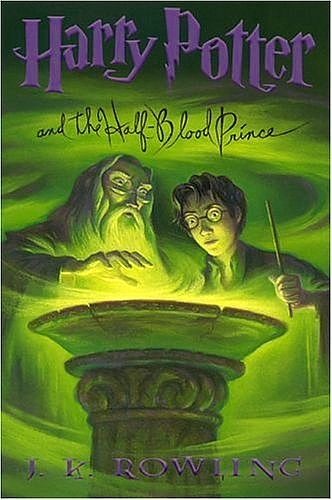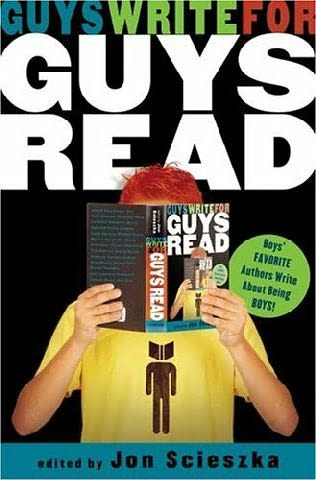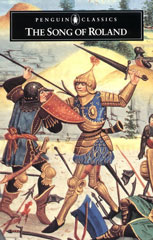 Harry Potter and the Half-Blood Prince, by J.K. Rowling, read by Jim Dale
Harry Potter and the Half-Blood Prince, by J.K. Rowling, read by Jim DaleI understand this would have been more appropriate towards the beginning of the summer, but readers, that is when I started this audio version! I had hoped to start and finish it before the movie version came out but circumstances beyond my control kept me from it (dad stole some of the cd’s and then I kept driving with people who refused to listen to its goodness). Sure, call me a nerd, but I love Harry Potter.
After defeating some Death-Eaters and proving Lord Voldemort’s return at the Ministry of Magic in The Order of the Pheonix, Harry, Ron and Hermione return to Hogwarts School of Witchcraft and Wizardry. The all-around mood in the wizarding world is caution and terror as Death-Eater attacks are increasing and the Daily Prophet shows more and more disappearances on the front page. On top of everything else, after passing their Ordinary Wizarding Level tests, the terrific three must also take increasingly hard classes on their way to becoming aurors (with some budding romances along the way). Harry has an advantage however when he comes across an old potions textbook with glorious amounts of helpful hints in the margins. The previous owner, the Half-Blood Prince, also included some new spells as well. Hermione of course doesn’t trust the book, but Harry lives by it, especially when the helpful hints gain him points in Potions class and helps save Ron’s life. Things turn dark when Harry finds a spell found in the margins labeled “for enemies” and uses it on Malfoy in a duel. The book holds some questions as to who the true Half-Blood Prince is, but the major thread of questioning and discovery in this novel comes in the form of Harry’s private lessons with Dumbledore this year. Dumbledore has decided to inform Harry what he can of Lord Voldemort’s past through a collection of gathered memories from random family members, witnesses and house elves. Harry must try to piece together what he can about Voldemort’s past and some objects called Horcruxes to attempt at gaining an advantage in a destined battle to the death with He-who-must-not-be-named.

Harry Potter and the Half-Blood Prince is a very important installment in the series. There is a lot of important background information on Lord Voldemort (a.k.a. Tom Marvolo Riddle) but also around events that led up to the death of Harry’s parents. This is very crucial and interesting information, but because of this, readers will find less action than previous books until the later chapters. Towards the end there are some amazingly important and breath-taking fights, duels, action sequences, etc, but even with all of the answer giving throughout the entire book, the end still leaves you questioning the future for Harry Potter, Ron Weasley and Hermione Granger. Thankfully, the majority of this book’s final actions can be explained in the next audio book I plan on listening to (after I get it back from my dad) which has a good combination of information and action found in previous books. I like where the characters are in this book, even though some readers think there is too much teenage drama. May I remind readers that they are finally 16 and allowed to have crushes and drama? And what does any of it matter when you have the wonderful voices of Jim Dale filling your ears and taking you away to Hogwarts. I can’t wait for him to take me away in the final novel.
Harry Potter. Enough recommendation said. If you haven’t read it already, get on that loser!
“A good book is the best of friends, the same today and forever.”
- Martin Tupper




 The Song of Roland
The Song of Roland